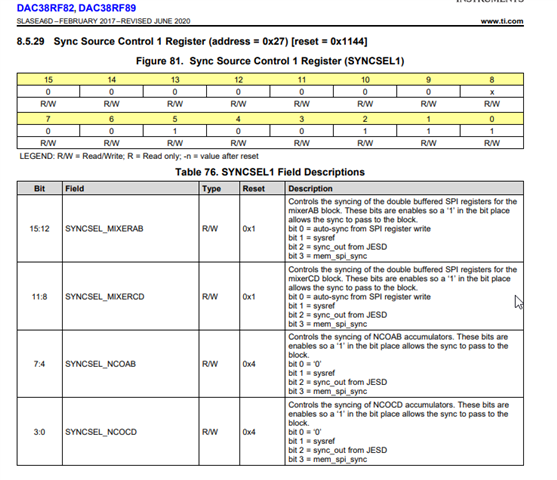Other Parts Discussed in Thread: LMX2582, DAC38RF89
Tool/software:
Hi,
I am working with DAC38RF93 and we are having some problems with high spurious in the output of this DAC.
I am sending the desired signal in baseband sampled to 158.4 MHz by the JESD interface and then DAC interpolation(x16) is used to increase the sampling frequency to 2534,4 MHz.
Aditionally, an external oscillator (2534.4MHz) is used as sampling frequency for DAC38RF93. This external oscillator is generated using LMX2582.
With these conditions, for example the desired output signal would be 422 MHz, baseband in FPGA is generated for that using the configured DAC NCO to 422.5MHz to achieve in the DAC output the desired signal(422 MHz). But the problem is that besides 422MHz signal,another signal appears exactly in the image frequency related to NCO in the DAC output. In this case, another signal appears in 423 MHz frequency with an important level.
This effect (high spurious to image frequency related to NCO) occurs sometimes, not always.
Which could it be the reason of this effect?
Thanks in advance.
Best Regards,
Pedro




